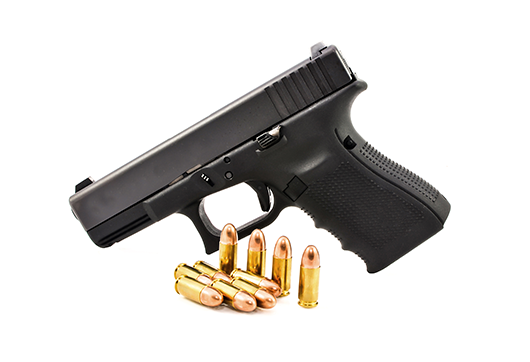Is it Safe to Appendix Carry a Glock?
Oct 27th 2020

Depending on your manner of dress, your anatomy, your occupation, and other factors, the number of concealed carry methods is extensive. Regardless of how or why you carry a handgun, your choice of holster is critical. The holster allows you to safely and securely carry the firearm and in an easily accessible manner. The Glock series is no exception.
Appendix Carry
If we think of the waistline as the face of a clock, with your navel at the 12-o’clock position and the small of your back at 6 o’clock, appendix carry, for a right-handed shooter, is typically at 1 o’clock. That is, just right of the centerline.
Appendix carry probably offers the greatest speed and accessibility of any method of carry because the gun is right in front of you at all times and doesn’t require any awkward hand or arm movements. However, it is also one of the most controversial methods of carry because of how the gun is positioned with the muzzle pointing toward your groin.
IWB, or in the waistband, is, as the name suggests, wearing a custom holster between the waistband and the body. Increasing concealment, as part of the gun, is hidden; this is also one of the most versatile ways of carrying. Appendix inside the waistband, also known as AIWB carry, combines the two, maximizing concealment and accessibility.
How Safe is Appendix Carry?
The perceived risk of negligent discharge regarding appendix carry is understandable given the direction the muzzle is facing. However, that risk can be minimized, and negligent discharges can be avoided with strict observance of firearms safety rules.
However, if you violate these rules, and especially, “Keep your finger off the trigger until your sights are on the target” the consequences of a negligent discharge are potentially more dangerous with appendix carry than other carry positions.
Ensuring Safety
Your trigger discipline must be unwavering, and a holster that covers the trigger guard should be considered a necessity. This is true, regardless of your chosen carry position.
Unless your sights are aligned on the target or your muzzle is otherwise pointed downrange in unsighted reflexive shooting, your finger should be off the trigger, outside the trigger guard, and resting alongside the frame. That takes care of a negligent discharge risk as the gun is being drawn from its holster.
Be Aware of Loose Fabric
There is a potential cause of unintentional discharge that is not, itself, a result of violating the basic rules of firearms safety. This is where, upon reholstering the gun, the cover garment inadvertently enters the trigger guard, activating the trigger and releasing the hammer/firing pin.
Another related type is the holster mouth if it is made from a pliable fabric or soft leather-like chamois, entering the trigger guard and depressing the trigger as you apply downward pressure. That’s where Kydex shines.
Neither outcome would be particularly desirable with any carry position, but when carrying the gun in an appendix carry holster, this could be catastrophic. That’s why a good holster and proper gun handling are essential.
You need a holster made from a sufficiently rigid material so as not to interfere with the trigger, and you need to be careful as you reholster your weapon.
One advantage of carrying appendix is that you can more easily see inside the holster as you return your gun to it, as it’s right in front of you, so you’re more likely to catch that drawstring or loose piece of fabric and remove it in time.
Carrying a gun in a holster on your strong side doesn’t absolve you of the responsibility of observing gun-safety rules.
If you carry a handgun in a shoulder holster, particularly a horizontal one, your muzzle is covering anyone standing behind you.

Appendix Carry with the Glock
The Glock, although not strictly having either a double- or single-action trigger, nonetheless has a single-action trigger pull’s weight.
With a trigger safety as part of its Safe Action System, there is a risk of trigger activation — the holster mouth or interfering material could activate it, particularly on a fast reholster. One remedy is the Striker Control Device, or SCD, which replaces the slide cover plate.
This allows the user to replicate the technique used with double-action, hammer-fired guns whereby pressure is applied to the hammer as the gun is being holstered, which prevents movement of the trigger. In the Glock, when depressed with the thumb, the Striker Control Device stops the trigger bar and the trigger from moving. Of course, this is not a substitute for exercising sound judgment or following safety rules, but it can add peace of mind.
The Last Word
Appendix carry, when performed with the right holster and a trained hand, is perfectly safe, and that includes your Glock 19 handgun. At Incognito Concealment, we’re confident we have the right holster for you. Call us at (586) 333-4240, and we’ll guide you through the process of choosing a holster to suit your needs.











